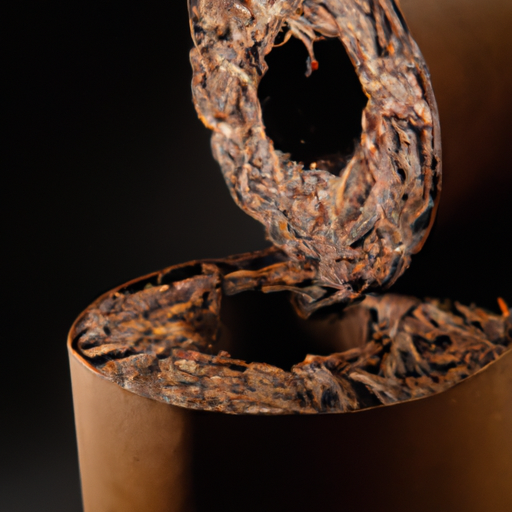Puerh Tea: The Ancient Fermented Treasure from Yunnan
Steeping Back in Time: Puerh Tea History
There's something extraordinary about sipping a tea as ancient and steeped in history as Puerh. This fermented tea hails from Yunnan province in China and holds a special place in tea history. In this post, we will dive into the rich background and unique qualities of this dark liquid treasure.
Puerh tea dates back to the Han Dynasty (202 BC-220 AD), making it one of the oldest teas still brewed today. This tea was first produced in areas surrounding the city of Pu'er, from which it derives its name. The ancient tea leaves were pressed into cakes and transported on mules and horses via the Tea Horse Road that connected Yunnan to Tibet, Sichuan, and other regions.
One of the reasons Puerh tea was highly traded was due to its unique fermentation process that allowed it to age and develop more complex flavors over time. Traditionally, Puerh was aged for months or even years in dark, humid environments. This extended fermentation process resulted in a dark, earthy, and robust tea that appealed to many.
Understanding the Types of Puerh Tea: Sheng vs Shou
Like a fine wine, Puerh tea comes in various varieties and can vary tremendously based on its production, terroir, and age. That said, all Puerh teas can be classified into two main categories: raw (Sheng) Puerh and ripe (Shou) Puerh.
Sheng Puerh
Sheng Puerh is the original Puerh tea, made using an entirely natural fermentation process. The leaves undergo a partial oxidation after being picked, before being shaped and compressed into cakes or bricks. They are then left to age and ferment – sometimes for many years – to develop their complex, earthy flavors.
Table 1: Characteristics of Sheng Puerh
| Flavor Profile | Aroma | Mouthfeel | Auxiliary flavors |
|---|---|---|---|
| Earthy, floral, fruity | Fresh, camphor notes | Astringent | Forest floor, musk, mineral notes |
Shou Puerh
Shou Puerh is a relatively new addition to the Puerh family, created in the 1970s to expedite the Puerh aging process. To produce Shou Puerh, tea leaves undergo an accelerated fermentation process called 'wo dui' (wet piling). This process involves piling the leaves in a warm and humid environment, allowing the tea to ferment and develop its signature dark color and intense flavors in a matter of months instead of years.
Table 2: Characteristics of Shou Puerh
| Flavor Profile | Aroma | Mouthfeel | Auxiliary flavors |
|---|---|---|---|
| Earthy, woody, nutty | Rich, damp forest notes | Creamy | Leather, dark chocolate, spices |
Health Benefits of Yunnan's Fermented Elixir
Puerh tea has long been prized for its health benefits – in fact, it was considered a form of medicine in ancient China. Modern research has also linked Puerh tea consumption to various health benefits. Some of these include:
- Aiding in digestion, due to its ability to break down fats
- Supporting cardiovascular health through the reduction of cholesterol and triglycerides
- Potentially aiding in weight loss, as it can help increase metabolism, break down fats, and suppress appetite
- Rich in antioxidants and polyphenols, which may contribute to anti-inflammatory and anti-cancer properties
Aged or Unaged? The Puerh Venture
Puerh tea is unique in that it can be enjoyed both aged and unaged. The flavor of the tea changes dramatically with age, as fermentation and oxidation continue to shape its character. Furthermore, aged Puerh often acquires a smoother mouthfeel and a complex flavor profile.
While aged Puerh can be a more expensive investment, it can also be considered an opportunity in the tea world. Some tea enthusiasts, known as tea investors, purchase Puerh tea to store and age it, intending to sell it later at a higher price. However, just like wine, the value of aged Puerh depends on factors like rarity, demand, quality, and proper storage.
Puerh Tea-Brewing Tips
Brewing Puerh tea can look daunting, but it doesn't have to be. Here are a few brewing tips to help you steep the perfect cup of Puerh:
- Use a gaiwan or a small teapot to brew your Puerh tea for a more authentic experience.
- Rinse the tea leaves: Pour hot water over your tea leaves and immediately discard the water. This step helps to open up the leaves and rid them of any impurities.
- Use 195-205°F (90-96°C) water for both raw and ripe Puerh teas.
- Steep the tea for 10-20 seconds for your first infusion, gradually increasing the steeping time for subsequent infusions. Puerh is notably forgiving when it comes to brewing time, and its flavor tends to intensify with shorter steeps.
- Savor the ever-evolving flavors of your Puerh with each sip, and pay attention to how the flavor profile changes over the multiple infusions.
The Final Sip: Probing Puerh's Legacy
In the end, Puerh tea isn't just a beverage – it's a journey through history, culture, and flavor. Next time you take a sip of this ancient fermented treasure from Yunnan, take a moment to imagine the generations of tea lovers who have shared in the experience of enjoying this unique tea.
Now it's time to raise our teacups to the long-lasting legacy of Puerh tea. But, we also want to hear from you, our dear readers! Have you tried Puerh before? What are your thoughts on aged vs unaged Puerh? Share your experiences and opinions in the discussion area below – let's keep the conversation brewing!
